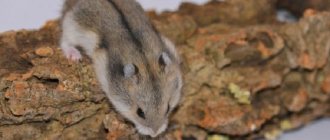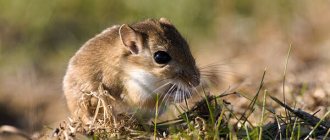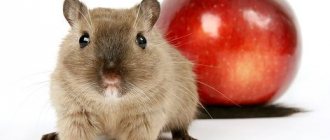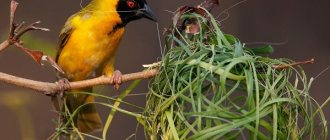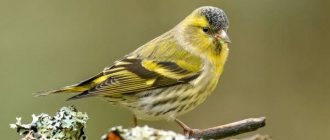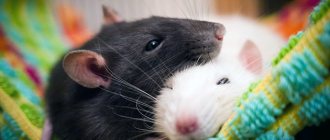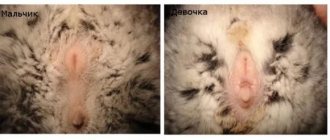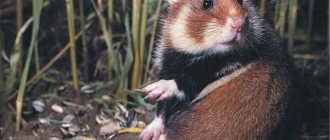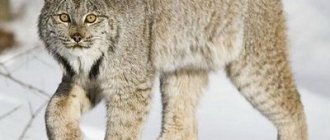Hamsters are one of the most popular pets. And this is not surprising - they are small, undemanding to care, and easy to maintain. Those who are just planning to get such a pet should find out how a hamster lives, everything about the varieties of rodents, their lifestyle, nutrition and reproduction. This information will help organize suitable living conditions for the animal and avoid mistakes in care that can be fatal.
Description of the rodent
Red hamster eats a leaf
– Advertisement –
Hamsters are small rodents with a dense build, short legs, small ears and short tails. The body length ranges from 5 to 34 cm, the tail is from 0.7 to 10 cm in length. Females can exceed males in size. The fur is thick, the back is colored from ash or brownish-gray to dark brown-ochre. The abdomen is found in black, white or gray. There is a pronounced black stripe on the back. Hamsters also differ from other types of rodents in having well-developed cheek pouches.
What to do if bitten by a hamster?
Hamsters are harmless, but very sensitive and timid creatures. Therefore, sometimes there is a risk of being bitten, but not out of malice, but for the purpose of self-defense. Additionally, if your hand smells like food, your hamster may simply mistake it for a tasty treat. What to do if you are bitten?
Firstly, remain calm and not punish the animal - he did not do it out of malice. Carefully place it in the cage and treat the bite site with brilliant green, alcohol or hydrogen peroxide, and apply a band-aid. If your hamster is healthy, then there will be no dangerous consequences from the bite.
flickr/pyza
Hamster nutritional features
A hamster eats corn at a small table.
Hamsters are omnivorous rodents, but their diet is dominated by plant foods. In addition, hamsters feed on insects and their larvae, small vertebrates (mice, reptiles and amphibians). In the autumn, they switch to seeds and tubers, and also store them in quantities from 0.5 to 11-16 kg. Sometimes hamsters' storerooms with grains and potatoes reach 90 kg. Hamsters also bring grain, peas, rice, millet, buckwheat, lupine, corn, lentils, potatoes to the pantries, putting different varieties of seeds separately. The hamster feeds on these reserves in the winter, temporarily waking up from hibernation, and in the spring until fresh food becomes available.
The hamster carries food in its cheek pouches, which contain about 46 g of wheat. Can carry food for about 1 km.
Character and lifestyle
By their nature, hamsters are loners, aggressive against anyone who encroaches on their territory. They protect their possessions up to 10-12 hectares in size. The size of the enemy does not matter; there are known cases of rodent attacks on large dogs.
If related rodents run away from meeting a person, steppe hamsters may attack. Rodent bites are painful, can cause infection with many diseases, and leave lacerations.
Ruthlessness manifests itself even towards its own individuals. The weaker ones will not escape alive from their strong and toothy relatives if they consider them an enemy during mating time or simply notice an unwanted guest near their reserves. The activity of the animals manifests itself at twilight. Hamsters are nocturnal animals . During the day they hide in holes, gaining strength for fearless hunting.
Deep dwellings are located 2-2 meters underground. If the soil allows, the hamster will go as deep as possible into the soil. The living chamber is equipped with three exits: two “doors” for ease of movement, and the third leads to a pantry with supplies for the animals’ winter life.
The hamster uses the accumulated food only during hungry, frosty times and at the beginning of spring. In other seasons, food consists of food from the external environment. Above the burrows there are always dug piles of earth, sprinkled with grain husks. If cobwebs have accumulated at the entrance, then the home is abandoned; hamsters keep the houses clean.
Not all hamsters hibernate; some species even turn white so that their forays into the snow cover are unnoticeable. Those who wait out harsh weather in shallow sleep periodically stay awake to refresh themselves with accumulated reserves. When the earth begins to warm up, in February, March or early April, it is time for the final awakening.
But before leaving completely, the hamster will still feast on supplies, gain strength, and then open the entrances and exits of the hole. The males emerge from the burrows first, and the females a little later.
Peaceful relations between them are established only during the marriage period, otherwise they exist on equal terms. Hamsters' ability to swim well is amazing. They inflate their cheek pouches like a life jacket that keeps them afloat.
Hamster spread
— Advertising —
Hamster distribution map
Hamsters are widespread in Central and Eastern Europe, Asia Minor, Syria, Iran, Siberia, Mongolia, northern China and Korea.
The largest populations live in the forest-steppe and steppe. In the south it prefers damp areas, such as river valleys. In the mountains it is found at altitudes up to 3600 m above sea level, up to mountain meadows and forests. It also develops cultivated areas, such as rice fields, forest belts, parks, orchards, vegetable gardens, and residential buildings. Prefers dense soils, rare on sandy soils.
Video “Forest black hamster”
This video was shared by a summer resident who accidentally came across an amazingly beautiful forest black hamster in his garden.
Was this article helpful?
Thank you for your opinion!
The article was useful. Please share the information with your friends.
Yes (100.00%)
No
X
Please write what is wrong and leave recommendations on the article
Cancel reply
Rate the benefit of the article: Rate the author ( 8 votes, average: 4.88 out of 5)
Discuss the article:
Common types of hamster
Common hamster (Cricetus cricetus)
A common hamster emerges from its burrow.
The body length of adult males is 27-34 cm, the tail is 3-8 cm long, weight is about 700 g. The tail becomes thinner towards the end, covered with short, stiff hairs. The ears are short and dark. The fur is thick and soft. The color is bright and contrasting. The back is reddish-brown, the belly is black. On the sides there are two large light spots separated by black fur. There are also light spots on the sides of the head and behind the ears. There are specimens that are black or black with white spots on the legs and neck. In total, more than 10 subspecies of the common hamster have been described. The color becomes lighter from north to south, body size increases from west to east and from north to south.
The species lives in the meadow and forest-steppe of Eurasia from Belgium to Altai and Northern Xinjiang.
Syrian hamster, or Central Asian hamster (Mesocricetus auratus)
Syrian hamster in its burrow
Body length is about 13 cm, tail up to 1.5 cm. Weight ranges from 100 to 125 g. The fur is soft, thick, golden.
It is found in nature near the Syrian city of Aleppo and in eastern Turkey.
Brandt's hamster or Transcaucasian hamster (Mesocricetus brandti)
The Caucasian hamster hides in the grass.
Body length is 15-18 cm, tail length is 2-3 cm. Weight is up to 300 g. Ears are small. The back is earthy brown. The belly is brownish-gray, there is a black spot on the chest. The sides of the head are yellowish-red, there are long black spots under the ears, and the chin is white. Paws are white. The fur is soft and thick on the tail.
The species' habitat includes Turkey, Israel, Lebanon, and the eastern Ciscaucasia. Inhabits steppes on mountain slopes, mountain meadows and cultivated areas.
Radde's hamster or Cis-Caucasian hamster (Mesocricetus raddei)
Radde's hamster in the grass - photo
Body length up to 28 cm, tail length about 1.5 cm. The back is brownish. The belly is black or dark gray. There are light spots on the cheeks and behind the ears.
Distributed in Georgia and Russia, in the North Caucasus, in the Stavropol Territory and in the Ciscaucasia, in the steppes and forest belts.
Newton's hamster (Mesocricetus newtoni)
Newton's hamster in the steppe
Body length 14-17 cm, tail length up to 2 cm, weight 80-150 g. The back is gray-brown, with a black stripe running down the center of the back. The neck and chest are black-brown, the belly is yellowish-gray.
Found along the Danube, in Bulgaria and Romania.
Djungarian hamster (Phodopus sungorus)
Djungarian hamster
Body length up to 10 cm, weight 35-65 g. Gray back decorated with a dark stripe, short tail. Fur with white spots.
Inhabits dry steppes and semi-deserts in the south of Western Siberia, Dzungarian Alatau, and Khakassia.
Campbell's hamster (Phodopus campbelli)
Campbell's hamster - photo
Body length 7-10 cm, short tail, up to 1.5 cm long, weight about 25 g. The head is round, the muzzle is short. The fur is dark gray with a brown tint, there is a dark stripe on the back, and the belly is gray.
The species is distributed in Mongolia, northern China, Russia and Kazakhstan.
Roborovski's hamster (Phodopus roborovskii)
Roborovsky hamster photo at home
A small species with a body length of 4-5 cm, weighing about 30 g. The head and back are sandy-golden, the abdomen is white. Light spots are visible above the eyes.
Found in Mongolia, China and Russia.
Short-tailed hamster (Cricetulus alticola)
Short-tailed hamster in the grass
Body length is 8-10 cm, weight ranges from 22 to 48 g. The fur is gray-yellow-brown without spots.
It lives in the north of South Asia and China, at altitudes of about 4000 m above sea level, in coniferous and birch forests, and in the steppes.
Barabinsky hamster (Cricetulus barabensis)
Barabinsky hamster - photo
Outwardly similar to an ordinary hamster. Inhabits forest-steppe and semi-deserts in the south of Western Siberia, Tuva, Transbaikalia, Mongolia, northeast China, Primorye (Russia) and Korea.
Gray hamster (Cricetulus migratorius)
Gray hamster in the steppe - photo
Body length 10-13 cm, tail 2-3.5 cm long. The coat is gray on top, the abdomen and tail are light. The eyes are large. The ears are small.
The species' habitat includes Eastern Europe, Russia, Asia to western China.
Sokolov's hamster (Cricetulus sokolovi)
Sokolov's hamster on a stone
Body length from 7 to 11 cm, tail length up to 3 cm. The back is gray with a dark stripe. The abdomen is light gray. There are dark brown spots in the center of the ears.
Found in sandy areas of Mongolia and China.
Mongolian hamster (Allocricetulus curtatus)
Mongolian hamster in the Berlin Zoo
A small species with a body length of 10-15 cm, a tail 1.5-2 cm long. The color is light, the tummy, tail and paws are white. The tail is fluffy.
It lives in the Zaisan depression in the south of Tuva, China and Mongolia.
Eversman's hamster (Allocricetulus eversmanni)
Eversman's hamster - photo
Body length 13-16 cm, tail 2-3 cm long. Legs short. The ears are small. The tail is wide, flattened, densely pubescent. The fur is short, soft, velvety. The back is blackish-brown or fawn-red or ash-sandy. The belly is white with a sharp border on the sides. There is a brown spot on the throat and chest. The paws and tail are white below.
Lives in the Lower and Middle Trans-Volga region, in the south of the Trans-Urals, in Kazakhstan.
Kansky hamster (Cansumys canus)
The Kansky hamster lies on its stomach.
Body length is from 10 to 17 cm, tail is 7-10 cm. Weight is from 60 to 120 g. The fur is thick, the back is gray with white spots on the cheeks and near the ears. The belly and tip of the tail are white.
The species is distributed in central China.
Rat-like hamster (Tscherskia triton)
Tscherskia triton in a cage
Body length from 14 to 25 cm, tail 7-10 cm long. Weight from 92 to 241 g. The back is light gray-brown, the tail is dark brown with a white tip, the paws are white.
The habitat includes northeast China, the south of Primorsky Krai, and Korea.
How to handle a hamster?
Gaining your hamster's trust will take patience and some time. However, all the efforts spent on this will pay off in full - communication with your pet will bring you only joy. What are the do's and don'ts when handling hamsters?
It is forbidden:
- make sudden movements or wave your arms near the hamster;
- pick up a hamster that has just woken up or is sleeping;
- drive into a corner or cover with palms;
- scream loudly near the cage;
- leave it on high surfaces - it does not distinguish distances and will definitely fall down;
- grab by the scruff of the neck with a rough movement.
Can:
- talk to the animal in a soft, calm voice;
- when picking him up, do it slowly and carefully, clasping him under the front paws;
- touch the hamster only with clean hands and give him the opportunity to sniff your hand first - this way he will quickly get used to your smell;
- Give him a chance to calm down if he is scared.
flickr/pyza
Hamster behavior
Hamster on a walk
Hamsters are terrestrial animals; some species can swim by taking air into their cheek pouches. They usually live alone, in burrows. Outside the breeding season, hamsters behave aggressively towards their relatives and often start fights. In winter, they fall into a prolonged torpor, which is still not real hibernation.
Hamsters are characterized by a twilight lifestyle. During the day they remain in their burrows, which reach 8 m in length and 1.5 m in depth. May occupy gopher burrows. In a permanent burrow there are from 2-5, sometimes up to 10 exits, a nesting chamber and storerooms.
There are both pros and cons to keeping hamsters at home.
Would you like to get a cute fluffy rodent, but can’t decide? Perhaps the lists of pros and cons of these miniature animals will help you make the right choice.
Advantages and disadvantages
The advantages of hamsters include:
Affordable price (the cost of a hamster is much lower than a guinea pig or chinchilla)
Doesn't take up much space in the apartment
Does not require complex long-term care
There will be no dirt or clumps of fur in the house, such as from cats and dogs
These peaceful and friendly creatures easily make contact with humans.
They do not need constant attention and communication
It’s very interesting to watch the antics and fuss of funny rodents
You don’t have to waste time preparing food and creating a balanced menu; you just need to buy special food in the store
Disadvantages include:
Low life expectancy
Not a very pleasant smell (if the cage is not cleaned on time)
They can bite, and it hurts very much.
They make noise at night, preventing the owners from sleeping
Fragile animals are prone to injuries and fractures, so they require careful handling
If the hamster escapes, it will be difficult to find and catch it
Once upon a time, a hamster in the house was exotic, but now these animals have firmly entered the human world. Fluffy rodents were and remain amazing creatures, because for many centuries they have been fighting for survival in the wild, and, despite all adversities, they confidently win. Well, at home, such an animal will give its owner positivity, delighting with its funny appearance and amusing tricks.
Hamster breeding
A female hamster with her offspring
Hamsters are known for their fertility, producing 2-4 litters per year. The duration of pregnancy is from 15 to 22 days, in one litter there are from 1 to 18 babies, they become sexually mature already at the 6-8th week of life. Under natural conditions, hamsters live from 1 to 3 years, at home about 3 years.
Reproduction and raising of offspring
Hamsters become sexually mature very early. Actually, both females and males are ready for procreation, reaching two months of age. The breeding season for these animals lasts from April to October. During the winter months, hamsters become inactive and practically do not crawl out of their burrows, eating accumulated reserves. But zoologists sometimes record cases of cubs being born in December, and this usually happens during an abnormally warm and snowless winter.
Unlike their wild counterparts, domestic hamsters breed all year round, since when kept in an apartment, their home always has a comfortable temperature and enough food.
Features of the mating season
As already mentioned, in their natural environment, hamsters lead a solitary lifestyle. They do not form strong mating unions, although some males have a kind of personal “harem” consisting of 3-5 females. True, he lives in different burrows, but the females live in the controlled territory of their “husband,” and he jealously protects them from the encroachments of foreign males.
The female and male meet only to mate
Hamsters do not have mating games, there is only a short period of courtship. To put the female in a romantic mood, the male marks the territory near her burrow with an odorous substance and brings gifts to the capricious lady in the form of grains, tree branches and tasty larvae.
As soon as the female responds favorably to the courtship, the couple in love retires to the hole for the whole day to mate. After mating games, the male leaves and does not take any part in raising the offspring.
Pregnancy and caring for babies
Recommended by topic
Guinea pig Storks Martens
A female hamster carries babies for 16-18 days, so she is able to bear offspring 2-3 times a year. Depending on the type of rodent, there are from 3 to 18 cubs in one litter.
Babies are born bald and blind, but newborn hamsters already have tiny incisors. Small hamsters can eat plant foods already in the second week of life, but for another month their main diet is mother's milk.
The cubs develop very quickly; in the second week they open their eyes, become covered with soft fur and look like a miniature copy of their parents. The female takes care of the babies until they grow up, takes them for walks, and teaches them to recognize the sounds made by predators. And if a furry mother notices a fox or ferret near her hole, she hurries to move the offspring to another, safer home.
Female hamsters are very caring and attentive mothers.
Sometimes females adopt other people's cubs and raise them along with their own offspring. But there are cases when females eat their babies. This happens when there is a shortage of food in a dry year, and also if there are too many babies in the litter, and the female understands that she cannot feed them all.
Natural enemies of the hamster
The main enemy of the hamster is the heron.
Hamsters become victims of such predators as the red and black kite, buzzard, lesser spotted eagle, fox, ermine and badger. Kestrels, gray herons, carrion crows, and rooks prey on the young.
Lifespan
How many years does a hamster live? Depending on the type – from 2 to 6 years. But life expectancy is also affected by its conditions. Domesticated hamsters, with good care, live the years measured by nature.
But in the wild, this scenario is often violated by predators: badger, owl, ermine, weasel, fox, lesser spotted eagle, buzzard, kites.
Because of so many enemies, not every hamster in the wild dies a natural death. Baby hamsters can become prey for rooks, carrion crows, gray herons or kestrels.
How do these rodents manage to survive in the changing and difficult conditions of the wild?
Due to the high fertility of hamsters, these animals manage to survive, even despite such a large number of enemies.
However, two species of hamsters - the Syrian and Newton's hamsters - are already endangered. Therefore, the life of each individual of these species is protected by law: they are listed in the International Red Book.
Animals are often saved from attacks by enemies by their remarkable ability to respond to sounds. Hearing an unfamiliar sound, hamsters become wary. –
- A barely audible distant sound forces rodents to seek refuge in a hole.
- If the sound is sudden and distinct, the hamsters freeze in place: there is no time to hide, so as not to get caught rushing about in the enemy’s eyes!
Failed to remain unnoticed? – Brave animals standing on their hind legs scare small offenders with a threatening pose. The hamster often uses its teeth to attack the enemy.
The sounds that the hamsters themselves, inhabiting the Panama highlands, can make are also life-saving. These sounds are similar to singing.
Therefore, these hamsters were nicknamed singing:
- With these sounds they notify other hamsters of their rights to the territory where their rivals accidentally wandered.
- With these same sounds, in their “hamster” language, the animals ask each other for help.
Nature itself protects wild hamsters from enemies. She gives some species of hamsters a white coat for the winter instead of the usual one, which blends into the background created by the habitat. By becoming invisible in the snow to a larger predator, the hamster is almost invulnerable to its teeth and claws!
Those who are not entitled to such a “dowry” have to sleep in their mink for almost five months a year!
Sorry, there are no surveys available at this time.
Pet hamsters
Domestic hamster in a cage
Syrian, Djungarian, Campbell and Roborovian hamsters are kept at home. Syrian hamsters come in a wide variety of colors, patterns, and coat types. Long-haired Syrian males are sometimes mistakenly called "Angora".
When choosing a hamster, take into account that Roborovsky hamsters can live in flocks, while other species are solitary, and when they are kept together, fights arise, which often lead to the death of the weaker of the hamsters. When hamsters of different sexes are kept together, the female gives birth very often, which harms her health and shortens her life. A pregnant female is capable of killing or injuring a male while protecting her cubs.
The dimensions of the cage for hamsters must be at least 50 cm by 30 cm. A wheel with a running surface (14-18 cm in diameter) must be installed in the cage. Eating at home is no different from eating in nature. The diet is based on cereals and green plants.
For mating, a pair is selected from a male aged 4 months and a female aged from 9 months. They are brought together on neutral territory or in a male’s cage during the female’s estrus period, which occurs for several hours every 4 days. Pregnancy lasts from 17 to 20 days. At the age of 4 weeks, the young animals are separated from the female, separated by gender.
Rules for keeping at home
Hamsters have become common pets due to their miniature size and ease of care. But even such an undemanding animal needs to create certain conditions of detention and provide it with proper nutrition. This means that it is strictly forbidden to keep a hamster in a round aquarium left over from a goldfish and feed it fast food.
To live comfortably in captivity, a furry rodent will need:
- Comfortable, spacious cage. Housing for a pet is selected taking into account its size, as well as the fact whether you want to have one or several hamsters. Naturally, for pair or collective keeping you will need a larger cage.
- Feeder and drinker. It is advisable to purchase 2 feeders, one for the grain mixture, and the second for vegetables and fruits.
- Cozy house. A small animal simply needs a shelter that resembles a dark mink, in which it can hide and take a break from annoying attention.
- Running wheel and walking ball. Allowing your furry pet to roam freely around the house is not a good idea. And such devices and balls will allow the hamster to satisfy its need for physical activity without causing damage to the apartment.
- Balanced diet. You need to feed the animal with special grain mixtures, which are sold in any pet store. You can feed your pet fresh vegetables, fruits and berries. And in the summer, pamper it with lush garden greens and herbs.
- Additional accessories. The list of these includes ladders, hammocks, labyrinths and tunnels. By the way, most of them can be made with your own hands.
It's time for training.
The hamster's cage is cleaned every 4-5 days. If this is done less often, an unpleasant odor will emanate from his home, and also, the wet filler will become an excellent environment for the development of pathogenic bacteria.
Character and behavior of domestic hamsters
Ornamental hamsters are descendants of generations raised in captivity, so they are not characterized by the aggression of their wild relatives. These are peace-loving and friendly animals that are willing to be handled and enjoy communicating and playing with humans.
It's cozy and warm in the hands of the owner
Of course, a pet hamster can also bite, but this happens if the rodent is scared or the owner accidentally hurt it. And if you behave correctly with your pet, the hamster will become affectionate and trusting, will take food from your hands, and even fall asleep in the palm of its owner.
Another difference between domestic hamsters is that they get along quite well with their fellow hamsters in a water cage. It is best to keep two females together; females are more good-natured and calm. Two males can also get along, but from time to time there will be fierce fights over territory and tidbits.
Hamsters share a sweet slice of tangerine between two
Well, if you want to start breeding furry rodents, then buy a pair of different sexes, or one male and two or three females. But keep in mind that in captivity hamsters breed all year round, so think in advance where you will place their numerous offspring.
Question to the expert
Please tell me why the hamster sleeps all the time?
If the hamster sleeps all day, this is normal; he is gaining strength for being awake at night. But when a pet sleeps at night and hardly shows up from its house, perhaps it lacks vitamins and beneficial microelements or is sick. Change the brand of food, and if necessary, show the animal to the veterinarian.
Interesting facts about the rodent:
Hamster runs with food in his cheeks
- The word “hamster” is of Old Church Slavonic origin, in turn borrowed from ancient Iranian, where “hamaēstar” is translated as “an enemy who throws to the ground.” This probably indicated that the hamster bends the stem of the cereal towards the ground and thus gets the seeds.
- The Syrian and Newton's hamsters are included in the International Red Book.
- Hamsters cause damage to agriculture as they feed on legumes and grain crops. In addition, they are carriers of pathogens of a number of infectious diseases, which is why their keeping is prohibited in Vietnam. The maximum fine for violation is 30 million VND, which is equal to the annual income of a resident of this country. But hamsters also bring benefits. For example, the skins of certain types of hamsters are harvested. Hamsters are also used as laboratory animals and pets.
To buy or not to buy?
The first thing you need to pay attention to is that family members are not allergic to animal hair or bedding fillers. Second, but no less important, is the choice of location for the cage of the future pet. Hamsters equally do not like drafts, too warm or cold air, and dampness. They do not belong in a smoky room, on the floor or windowsill. It is important to remember that these are living beings and they have the right to demand that they be treated with dignity.
flickr/pyza
Other indisputable advantages of keeping hamsters include their low cost and ease of care, which does not require special skills. The small amount of food a hamster needs for a full life will not affect the family budget in any way, and its cage will not take up much space in the apartment.
Agro-industry and wild hamsters
Wild rodents feed on roots, vegetables and grains. Multiplying animals can harm the crop.
Damage to crops
A rodent that settles in a country house or garden can bring a lot of trouble to a person. The animals happily eat crops. The harvest of carrots, beets, and potatoes suffers from the invasion of pests. Animals take beans, peas, and grain from the gardens to their pantries.
Rodent control methods
Getting rid of rodents is not easy. Hamsters are careful and smart animals. Many methods have been developed to combat them. The best effect is achieved by using several methods simultaneously.
The industry produces chemicals for the extermination of rodents. First you need to find where the hamster lives. The poison is then placed near the detected pest burrows. Products designed to control rats and mice are used. The method is inhumane, but effective. Disadvantage: Poisoned bait can be accidentally eaten by pets.
Live traps and mechanical traps are actively used to catch rodents. Unlike mice, a hamster is timid and is more difficult to lure into a trap. Flooding the hole with water has a good effect. First you need to find out where the shelter is. Then you should find all the emergency exits. They must be blocked to prevent the animal from escaping. After this, they begin to pour water into the hole. After some time, the animal will leave the shelter. At this moment the rodent is easy to catch.
Getting rid of wild hamsters is very difficult.
A modern way of pest control is the use of repellers. The devices produce sounds in a frequency range that people cannot hear, but cause anxiety in animals. As a result, the animals leave the plot after some time. This is an effective and humane method. The disadvantage is the cost of purchasing expensive devices. For a large area, it may be necessary to install several repellers.
Prevention of occurrence
To prevent the appearance of rodents in your garden or dacha, it is recommended:
- do not allow waste to accumulate in the garden;
- remove root crops and vegetables to the basement or home after harvest;
- plant plants in the garden whose smell repels rodents - chamomile, mint, tansy;
- get a large cat or dog - these animals can scare away pests.
How can you get infected from a wild hamster bite?
Wild rodents are natural carriers of many diseases. The bite of the animal is dangerous for humans and domestic animals. The rodent's teeth are sharp and leave deep, poorly healing wounds. The saliva of animals contains pathogens of about 30 diseases.
Fleas live in fur and carry salmonella, tularemia, brucella and other infections.
If you are bitten by a wild hamster, you should rinse the wound thoroughly with running water. Then treat the skin with disinfectants - hydrogen peroxide or iodine. Sometimes after a bite the victim’s body temperature rises. To avoid serious consequences, it is recommended to seek qualified help at a medical center or hospital as soon as possible.
Habitat and lifestyle of hamsters
Hamsters living in temperate climates face the cold of winter. Animals solve this problem in different ways: some lead an inactive lifestyle, others fall into short-term sleep, and still others, for example, the common hamster, spend the entire cold season sleeping, interrupting only for a hearty snack.
Hamsters are very thrifty animals.
By the way, all types of hamsters are thrifty. In the fall, they fill the storage facilities with impressive volumes of grub. It happens that in one hole they find from 10 to 90 kg of food. In China and Korea, peasants search for hamster holes from which they can extract a bag of good grain. The burrows of these rodents are quite long (up to 2.5 m).
Body structure
Hamsters look harmonious and proportional.
The structure of their body is characterized by the following features:
| Body type | Dense, knocked down |
| Body length (excluding tail) | 5–35 cm |
| Weight | 30–700 grams |
| Head | Not very large, round, on the muzzle there are hard whiskers (“whiskers”) of a dark color. |
| Ears | Small, rounded, on the outside the ears are covered with dark hairs, finer than the main fur. |
| Eyes | Little ones |
| Tail | Short, no more than 10 mm. It is thick at the base, then sharply tapers into a triangle shape. May be bare or covered with coarse and short hairs |
| Paws | Small but strong, with wide hands and feet. The toes have hard and strong claws, with the help of which the animal is able to dig holes even in very dense soils. Some species have bare limbs, others are covered with hair (this group is called “hair-footed”) |
| Wool | Thick and soft |
| Teeth | Sharp, strong. Teeth have no roots, but they grow throughout the rodent’s life. |
A distinctive feature of hamsters is the presence of special muscle cavities located in the lateral parts from the inner surface of the cheeks to the neck and very shoulders. These are the so-called cheek (or cheek) bags. For the rodent, they act as a kind of container into which the animal loads large supplies of food and then transfers them to the hole, where a stationary storage facility has already been installed, allowing the animal to be provided with food throughout the winter.
The presence of cheek pouches can make a hamster's life much easier. In addition to carrying food, the animal can use this feature of its physique for more original purposes, for example, swimming. The animal fills the volumetric cavity in the upper part of its body with air and thus receives an excellent “life preserver.”
Did you know? Cheek pouches are found not only in hamsters, but also in other rodents, including ground squirrels, chipmunks, harelips, pouched rats, and gophers. It is interesting that many species of monkeys have the same formations, but vultures, wolves and coyotes in the process of evolution have learned to use a safer place to transport food - their own stomach.
What is the character of hamsters?
Rodents are active and curious Providing a Home for a Hamster. Animals are interesting to watch when they play in a cage. If a pet has been accustomed to communicating with a person since childhood, it can calmly sit in your arms. Hamsters rarely bite All About Syrian Hamsters: mainly when they are frightened by a sudden movement. Before communicating, for example, with Syriac, it is recommended to wash your hands. He has poor eyesight, so he relies on smell and touch. If the owner's fingers smell of food, the animal can taste them.
It is not worth keeping individuals in pairs. Even when they live together from an early age, conflicts can arise over time.
If you are still going to buy several animals, it is better to place them in different cages.
Keep in mind that rodents are nocturnal. They sleep during the day, so it is better to play with them in the evening. If you decide to wake up your All About Syrian Hamsters pet, do it very carefully. Talk to him in a gentle voice and lightly rustle the bedding in the cage.
Conservation status
The Transcaucasian hamster is protected in Georgia because it is in danger of extinction. A gray hamster was taken under protection in Russia in the Lipetsk and Tambov regions. In the Nizhny Novgorod region and the Republic of Tatarstan, the animal is included in the Red Book. The gray hamster has a special status in the Penza region.
To save Alsatian hamsters (a unique species) from extinction in France, 3 million euros were allocated. According to the European Commission, the importance of protecting wild hamsters is constantly growing. In fact, these furry animals are part of the ecosystem. Its proper functioning depends on the balance created by a number of living and interacting organisms.

